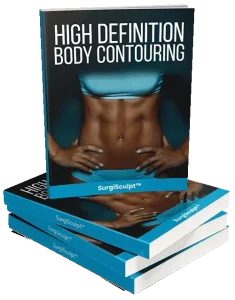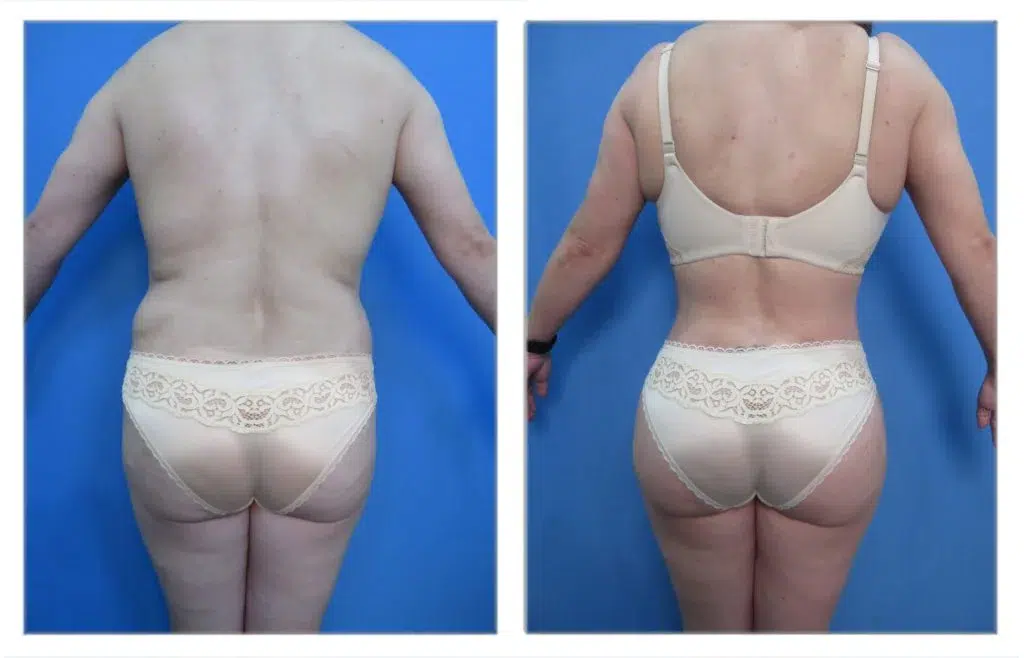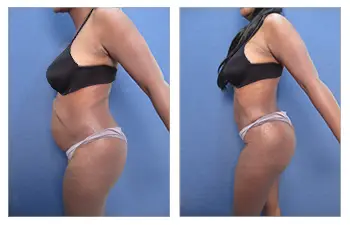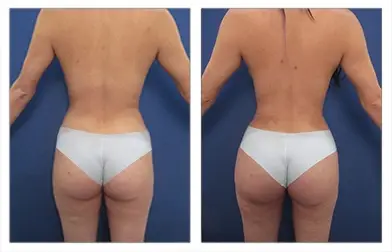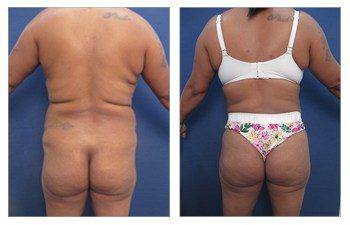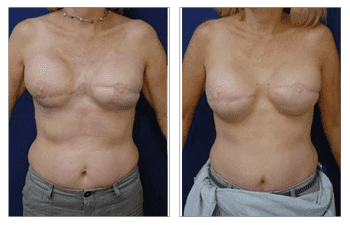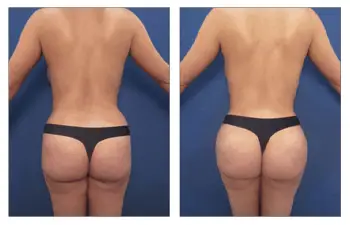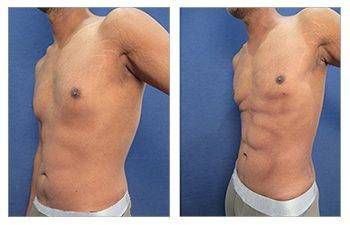FAT TRANSFER
FAT TRANSFER NEWPORT BEACH OVERVIEW
Fat transfer Newport Beach demands mastery, as our Newport Beach clients are very picky. The fat transfer procedure is judged by how well the body is contoured and transferred fat survival and volume retention. This surgical procedure demands attention to surgical technique details at every stage of the procedure. This cosmetic procedure involves the removal of the fat solution by liposuction, processing the fat, and then reinjecting the fat back into the body.
Recent advances in fat harvesting, processing, and reinjection techniques have allowed this treatment modality to blossom. Specific regions of the body have become the preferred sites of fat injection. These include the buttock, the face, the breast, the hands, and throughout the body to correct contour irregularities. Perhaps the most popular of the listed procedures above involves fat transfer to the buttock, called the Brazilian Butt Lift, which has come under great scrutiny. Concerns regarding fat emboli have plagued this procedure and questioned whether the Brazilian Butt lift is a safe procedure. Fat emboli are associated with the fat injection phase of the procedure, making this final stage of fat transfer the most scrutinized worldwide.
Recent advances in fat harvesting, processing, and reinjection techniques have allowed this treatment modality to blossom. Specific body regions have become the center of attention for fat injection. These include the buttock, the face, the breast, the hands, and throughout the body to correct contour irregularities.
Optimizing Fat Harvesting
Fat transfer Newport Beach is an extremely popular procedure. Fat harvesting provides two functions during the fat transfer process. First, it provides the opportunity to harvest the fat cells used for fat repositioning. However, it also provides the opportunity to ensure appropriate body contouring required to improve the body contour as a whole. Much like a sculptor who would create beautiful contours in a statue, your body must be sculpted as if it is a canvas to ensure that it is aesthetically pleasing in a 360-degree fashion. VASER liposuction, which uses ultrasound-assisted technology, provides several advantages to traditional liposuction. First, it allows your surgeon to superiorly contour your body by being able to remove fat comprehensively and uniformly.
In addition, melting the fat away from your nerves and blood vessels is less irritating to your soft tissues. This means less bruising of your donor sites in the recovery period. Less bruising translates into more comfort and shorter recovery times. The final advantage is its effect on fatty tissues. By melting the fat before extraction, the fat graft can be comprised of single cells rather than a cluster of solid fat. Fat graft that is single cells rather than a cluster of fat cells demonstrates improved survival rate and minimized volume loss.
Optimizing fat processing
Once the fat slurry, called the aspirate, has been removed, it must be washed and compacted before reinjection. Fat processing has traditionally been performed by washing the fat slurry in a sieve and letting the vascular fraction drain out before placement into syringes for injection. Unfortunately, this technique increases the exposure of the fat to the open air and can increase the risk of contamination and subsequent infection. It also increases the labor and subsequent delay in replacing the fat into the body.
Optimizing fat processing has been achieved by collecting fat into a closed-looped, sterile canister. The fat is suctioned directly from the liposuction cannula through the sterile tubing and into the modified sterile container. In this sealed canister, the fat can be processed by washing the fat with antibiotic irrigation and removing the excess fluid. Once the fluid has been removed, the compacted fat can be reinjected back into the patient. This completes the autologous fat transfer process to deliver young and mature adipocytes to areas of the desired augmentation.
The closed-loop system has several advantages compared to the traditional fat processing system. First, the fat exposure to the outside air is eliminated, thus minimizing the risk of contamination. Second, the processing time is reduced, thus decreasing out-of-body time for the fat cells. It is intuitive to acknowledge that lessening out-of-body time will ultimately improve survivability. The analogy is taking a fish out of water; if you leave it out too long, it will suffocate to death! A final measure to maximize fat cell viability is to keep the fat cells cooled by external contact cooling while out of the body to lower their metabolic activity. This concept is analogous to cardiac bypass routinely employed in cardiac surgery. This final advantage of contact cooling is made possible by having a sealed fat collection container.

Optimizing Fat Transfer
Traditionally, fat cells were injected using multiple 60cc syringes manually filled with fat cells following the processing phase. This process required direct pressure using your grip strength to inject the fat cells from the syringe into the body. This process was not only manually laborious, resulting in delays in fat injection and exposing fat cells to variable and even potentially destructive pressure forces. Both factors are considered harmful to fat graft tissues during the fat grafting procedure. During fat cell removal and re-injection, it is imperative to keep the applied pressures to less than 15 mm Hg. When injected with the hand pressure syringe technique, it becomes inevitable that variable and higher pressures are applied to the fat cells, which may cause fat cell death.
Additionally, grafting times typically last ½ hour to 1 hour of operative times and can be completed in only 5 to 10 minutes, thus minimizing out-of-body time. Finally, to ensure that fat cells are revascularized, meaning that the blood flow to them is re-established, it requires placement of fat cells in small aliquots so that the fat cell surface area to volume is maximized. Maximizing fat cell surface area to volume is critical to maximizing blood flow communication to the body. The closed-loop system with an automated, rotatory motor allows fat cells to be injected uniformly and with greater control than the variable palm pressure injection with multiple syringes.
The fastest-growing cosmetic procedure in the world is fat transfer to the buttock, as popularized by the Brazilian Buttock Lift, or BBL. This includes replacing fat removed from the body back into the buttock to improve buttock volume and shape. Fat transfer volumes to each buttock cheek can range from several hundred up to 1500cc of fat volume transferred. Traditional buttock fat transfer techniques were plagued by safety concerns and compromised aesthetic results. Recent advances in fat transfer techniques and protocols have focused on improving both safety concerns as well as aesthetic outcomes.
Advances in fat transfer techniques have focused on improving the safety concerns of fat embolism. Fat emboli can be a detrimental side effect of fat transfer if the fat cells inadvertently enter the bloodstream during the fat injection. This process involves the injection of fat cells into the gluteal veins if fat cells are inadvertently placed into or under the gluteus maximus muscle. It is feasible to theoretically eliminate the risk of fat emboli syndrome by controlling fat injection locations limited to only the fat layer. At SurgiSculpt, we utilize ultrasound-assisted guidance and proprietary fat grafting cannulas that can be visualized during fat grafting to avoid the gluteus maximus muscle. This is a unique service provided at our center to ensure patient safety. This is also a hallmark of our fat transfer Newport Beach protocol.
Finally, due to a large number of BBLs we perform, we are routinely referred unhappy patients who have previously undergone a Brazilian Buttock Lift. Patients' first complaint is that their surgeon did not provide them with the buttock volume and shape they desired. As a result, we have created the Buttock Assessment Tool that allows patients to communicate the exact buttock size and shape they desire. This tool ensures that patients are satisfied with their Brazillian Buttock Lift outcomes.
Fat transfer to the face is much different than fat transfer to the buttock. First, the transfer volumes are on a smaller scale, mainly in the 10 to 30cc volumes. In addition, the fat is transferred using smaller caliber cannulas and micro-fat packets measuring 0.1cc each. The areas of the face injected include the nasojugal groove, the nasolabial fold, the jawline, the lateral cheeks, the temples, the lips, the infra-eyebrows, and even the nose. When the nasojugal groove flattens or divots, it may benefit from autologous fat grafting.
Autologous fat grafting is an alternative to injectable fillers using a dermal filler that provides only temporary correction. By filling the nasojugal groove, your plastic surgeon can improve upper central cheek fullness and efface a deepened nasolabial fold by eliminating skin redundancy that leans over from the central cheek onto the nose and lips. The nasolabial folds form as skin redundancy is observed forming around the mouth. The fat transfer will allow your surgeon to stent this skin redundancy so that it does not hang over as prominently.
Fat transfer in the lateral cheeks is often desired by women who want a more cat-like appearance achieved by a prominent lateral cheek region. Filling of the temples is often desired if there is a weakening of the temporalis muscle following Botox injections or after weight loss. If the temples hollow out, they can create a deformity that is characterized by the hourglass deformity. Injection of the lips can also be desired by patients feeling that they have a thin upper lip. Fat grafting provides an alternative to dermal fillers that fill the upper lip greater than the typically larger lower lip. The fat filler to the lips is introduced through the corner of the mouth, called the modiolus. Another fat transfer region includes the infra-eyebrow region, which will help lift the eyebrows and counter brow droop. Finally, fat transfer to the nose can help camouflage a nasal dorsal hump by filling in the void in the upper nose, referred to as the radix.
Traditionally, small stabs less than 3mm were made with a scalpel before injecting the fat into the facial regions above. At SurgiSculpt, we utilize 18 gauge needles to make entry sites for injecting fat cells. The advantage of this technique is that no suture repair nor scarring is observed following the transfer of fat using micro-caliber cannulas. Fat may be harvested from any body area and quickly processed and transferred in minutes. Minimizing body time and micrografting of fat aliquots has allowed for superior fat transfer outcomes.
Fat transfer in Newport Beach has evolved from breast reconstruction procedures to be coined Natural Breast Augmentation for clients who want to avoid implants. Fat transfer to the breasts has been most limited in volume retention. It has been observed that fat transfer to the breasts is unlike that of the buttock. When fat transfer volumes greater than 250cc to the breasts are performed, the retention volume is compromised. In contrast, when modest volumes of fat transfer, less than 150 to 200cc, are transferred, volume retention is improved.
Thus, only conservative volumes of fat transfer to the breast have been successful. This has been very successful in breast reconstruction patients who desire improvement in their contour rather than an increase in breast size. Unfortunately, smaller volumes of fat transfer to the breasts do not routinely achieve most cosmetic surgery patients' goals of gaining a cup or two increase in size. This is because 250cc of volume increase is needed to achieve a cup increase.
To date, studies have not discovered the reason for this limitation of fat transfer to the breasts. The current theory hypothesizes that breast tissues and other body areas, such as the buttocks, are not vascularized. This results in poor revascularization of transferred fat cells. In an attempt to optimize blood flow revascularization of fat cells, only conservative volumes of transfer are performed in by fat grafting surgeons in the range of 50 to 150cc. As such, when larger breast mounds are desired, multiple fat transfer sessions, ranging 2 to 4 in number, are recommended.
Fat transfer to the hands
Fat transfer to the dorsal hands is recommended for patients who feel that their hands have aged. The aging hand will demonstrate atrophy of naturally occurring fat which then exaggerates the appearance of underlying tendons and veins.
Fat transfer in the hands is performed through access to the four web spaces. Approximately 5 to 7 cc of fat can be transferred through each webspace and in the superficial layer under the skin for 20 to 30 cc of total fat transferred per hand. The fat transferred is massaged to ensure a uniform and smooth contour that camouflages the underlying tendons and veins.
Fat transfer can correct contour irregularities created by botched liposuction procedures. When fat is removed from the superficial fat layer, uniform fat removal is not always possible, especially if traditional liposuction techniques are used. Often, divots and contour irregularities are observed that are not aesthetically pleasing. Fat can be re-transferred to areas of concavity to help smoothen the overlying contour. Fat transfer can be performed in all areas of the body.
Patient satisfaction following fat transfer Newport Beach is very high. This is because areas patients desire to be augmented can be corrected with healthy tissues of fat harvested from their subcutaneous tissues. Autologous fat grafting provides a source of alive fat cells, thus resulting in graft survival and permanent correction of areas of concern. The observed increase in volume is routinely observed using optimized fat grafting techniques. Interestingly, some of the younger fat cells transferred may be stem cell-derived. Differentiating of stem cells will trigger continued growth of healthy fat cells the following transfer, thus resulting in even more robust augmentation. Fortunately, clinical studies have demonstrated that these fat cells, called adipose stem cells, self-regulate themselves, so you do not have to worry about volume loss or overgrowth of cells, as observed in cancer cells.
Interestingly, even in the breasts, fat transfer has not interfered with breast cancer detection nor increased the risk of breast cancer development. Patient outcomes are most affected by surgical design, your treatment plan, and optimized surgical implementation. Aesthetic surgery outcomes are most affected by the appropriate management of fat parcel harvesting, processing, and injection techniques. In summary, both amounts of fat parcels, as well as technique of parcels of fat transferred, are both critical.
So, we invite you to a free consultation to see if fat transfer in Newport Beach is right for you.
